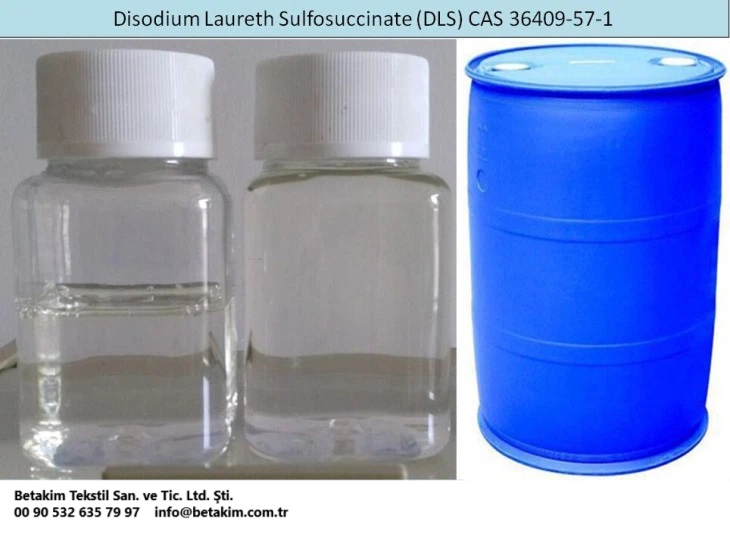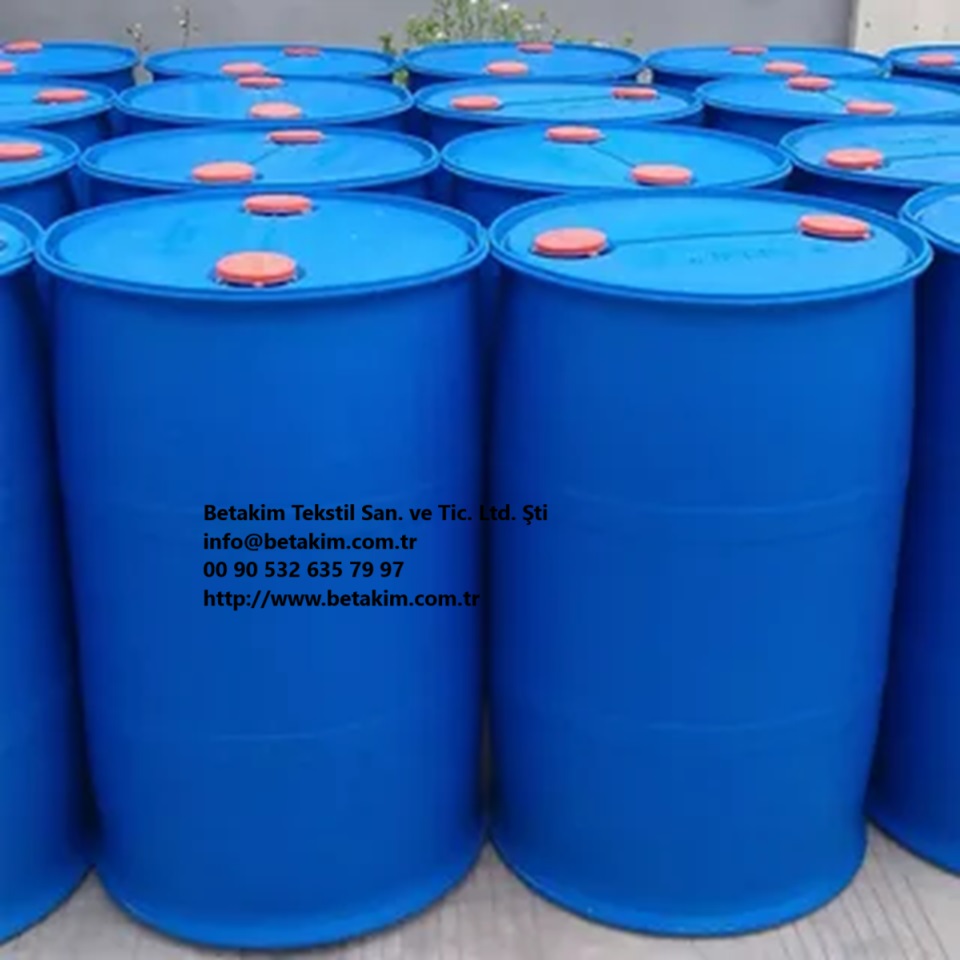We unleash your business potential by maximize the business innovation.
Send EmailDisodium Laureth Sulfosuccinate (DLS), Dodecyl Sodium Sulfosuccinate, Disodium 4-Dodecyl 2-sulphonatosuccinate, Dodecyl Sodium Sulfosuccinate, LDSS, DLS, 13192-12-6
Product Description:
-
Product Name: Disodium Laureth Sulfosuccinate (DLS)
-
Chemical Formula: C₁₆H₂₈Na₂O₇S
-
CAS Number: 13192-12-6
-
Appearance: Colorless to slightly yellow liquid
-
Molecular Weight: 410.43 g/mol
-
Density: Not specified
-
Solubility: Soluble in water
Physical and Chemical Properties:
-
Physical Properties:
-
Appearance: Colorless to slightly yellow liquid
-
Solubility: Soluble in water
-
-
Chemical Properties:
-
Chemical Formula: C₁₆H₂₈Na₂O₇S
-
Reactivity: Generally chemically inert and does not react with many chemicals. However, it can react at high temperatures or with strong oxidizing agents.
-
pH Stability: Stable over a wide pH range
-
Uses:
-
Personal Care Products: Used as a surfactant in shampoos, bubble baths, soaps, and body washes. It is a gentle cleansing agent that produces a creamy, rich lather.
-
Cleaning Products: Found in laundry detergents, dishwashing liquids, and floor cleaners.
-
Industrial: Used in various industrial applications, including detergents and cleaning agents.
-
Agriculture: Used as an anionic surfactant, solubilizer, emulsifier, wetting agent, and solvent in various agricultural applications, particularly pest control.
Other Names:
-
Disodium 4-dodecyl 2-sulphonatosuccinate
-
Dodecyl sodium sulfosuccinate
-
LDSS
Common Name:
-
Disodium Laureth Sulfosuccinate (DLS)
CAS No.: 13192-12-6
EC No.: 236-149-5
Molecular Formula: C16H28Na2O7S
| Name | disodium 4-dodecyl 2-sulphonatosuccinate |
| Synonyms | LDSS Dodecyl sodium sulfosuccinate disodium 4-dodecyl 2-sulphonatosuccinate disodium,4-dodecan-4-yloxy-4-oxo-3-sulfonatobutanoate Butanedioic acid, sulfo-, 4-dodecyl ester, disodium salt 2-(Sodiooxysulfonyl)-4-(dodecyloxy)-4-oxobutanoic acid sodium salt 2-[(Sodiooxy)sulfonyl]butanedioic acid 1-sodium 4-dodecyl ester salt |
| CAS | 13192-12-6 |
| EINECS | 236-149-5 |
Physico-chemical Properties
| Molecular Formula | C16H28Na2O7S |
| Molar Mass | 410.43386 |
| Use | It is widely used in foam bath, shampoo, facial cleanser, and also used for washing carpet and indoor decoration products. |
Disodium laureth sulfosuccinate acts as a de-greasing, emulsifier, and a foaming agent which is used in many shampoos and other cleaning products. It is considered as a gentle cleansing ingredient for hair & skin.
Use:
- Detergency: tooth paste, shampoo, cosmetic, detergent, etc. -
- Construction: plasterboard, additive of concrete, coating, etc. -
- Pharmaceutical: Medicine, pesticide, etc. -Leather: leather soft agent, wool cleaning agent, etc. -
- Paper making: penetrant, flocculating agent, deinking agent, etc. -
- Auxiliaries: textile auxiliaries, plastic auxiliaries, etc. -
- Fire fighting: oil well fire fighting, fire fighting device, etc. -
- Mineral choosing: mine flotation, coal water mixture, etc.
Introduction
disodium 4-dodecyl 2-sulfonate (Disodium 4-dodecyl 2-sulfonate) is a surfactant, also known as DDS. The following is a description of its nature, use, preparation and safety information:
Nature:
-Appearance: DDS is white or off-white powder
-Solubility: DDS is soluble in water and organic solvents
-Stability: DDS is stable in the presence of acids, alkalis, electrolytes and oxidants
Use:
-Surfactant: DDS is used as a surfactant in detergent, washing powder, detergent and other cleaning products to reduce the surface tension of the liquid and improve the cleaning effect.
-Emulsifier: DDS is a good emulsifier, commonly used in cosmetics, lubricants, pesticides and other industries in the emulsifier.
-Colorants and pigment additives: DDS can be used for the dispersion and stabilization of dyes and pigments.
Preparation Method:
The preparation of DDS is generally obtained by the reaction of succinic acid diether and lauryl alcohol. The succinic acid diether was first reacted with lauryl alcohol to form lauryl succinate, and then reacted with soda ash to obtain DDS.
Safety Information:
After a certain treatment process, DDS can be used in many cleaning and cosmetics. However, as a chemical substance, the following matters should be paid attention to when using:
-Avoid contact with eyes and skin, if accidentally contact, please rinse immediately with plenty of water.
-should not be inhaled dust, use to avoid dust.
-Store away from fire and heat.
-Follow relevant laws and regulations and safety operation procedures when using.

